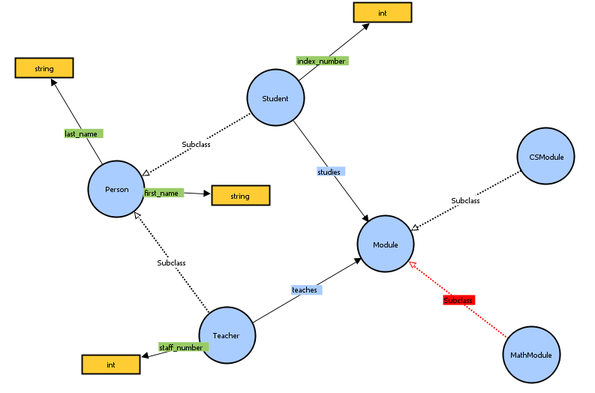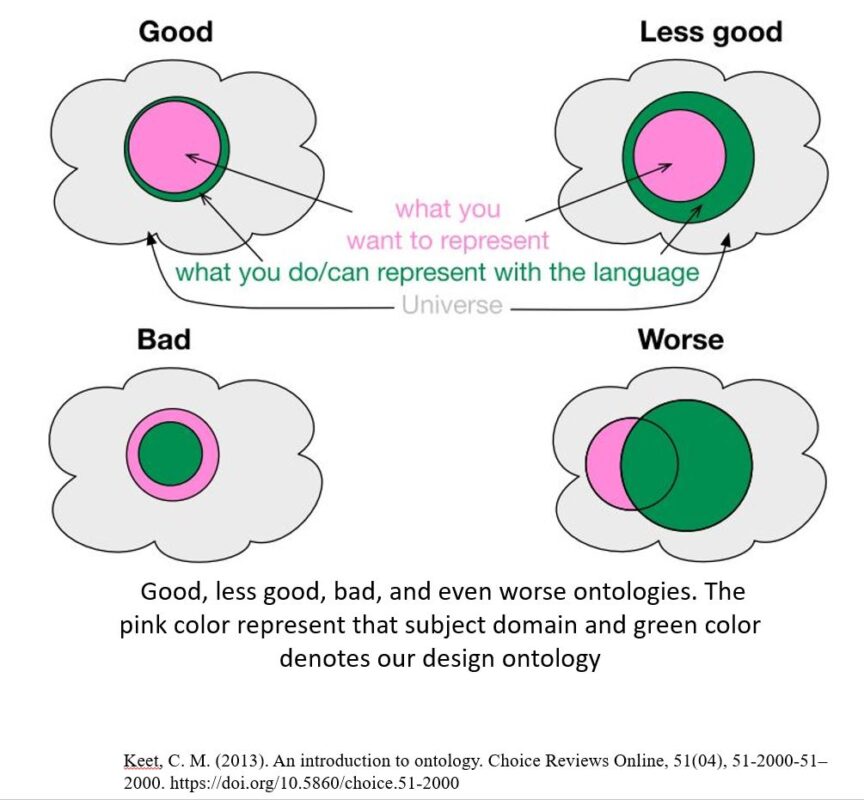
Ontology and knowledge graph
Ontology refers to a formal representation of knowledge that provides a common understanding of a domain’s concepts and relationships. A knowledge graph is a database that stores information in the form of a graph, with nodes representing entities and edges representing relationships between them. Both ontology and knowledge graphs are used to organize and represent knowledge in a structured and machine-readable way, enabling AI and other applications to reason with the information.
Knowledge Representation

In the context of knowledge graphs, ontologies are used to represent and organize knowledge in a structured and standardized way. An ontology can be thought of as a set of concepts and relationships that provide a common understanding of a domain of knowledge.
A good ontology is one that is well-defined, consistent, and widely accepted by experts in the domain. It should provide a clear and unambiguous representation of the concepts and relationships in the domain, and it should be flexible enough to accommodate new knowledge and evolving understanding.
A less good ontology, on the other hand, may be incomplete, inconsistent, or ambiguous. It may not fully capture the complexity of the domain, or it may contain errors or contradictions.
A bad ontology is one that is poorly defined, inconsistent, or inaccurate. It may be based on incomplete or outdated information, or it may be biased towards a particular perspective or agenda.
An even worse ontology is one that is completely inadequate or misleading. It may be based on false or misguided assumptions, or it may be intentionally deceptive or manipulative.
It’s worth noting that the quality of an ontology can be subjective and can depend on the context and perspective of the user. What one person considers a good ontology, another person may consider less good or even bad. However, there are some general principles and best practices that can help to evaluate the quality of an ontology and ensure that it is well-suited to its intended purpose.
Our company offers expertise in ontology development and knowledge graph representation using graph databases and semantic search applications. We can help our clients to create and maintain well-structured ontologies that provide a clear and consistent understanding of their domain-specific concepts and relationships. Our team of experts can assist with the design and implementation of graph databases, such as Neo4j and Amazon Neptune, to store and query large amounts of data using semantic queries. Additionally, we can help our clients to develop and integrate semantic search applications, such as Elasticsearch and Solr, to enable powerful search functionality and improve the discoverability of their data. With our expertise, our clients can gain a better understanding of their data and make more informed decisions.

